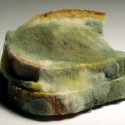Heavy rain has been coming down for days and it won’t let up. A loud crash outside catches your attention. You look out the window. A massive surge of water is sweeping away trees, cars, and buildings with ease.
A flash flood has overrun your town. The floodwater bursts open your door and starts rushing into your house. Hold your breath, because here’s how to survive a flood
You might think that hurricanes or earthquakes top the list of the deadliest natural disasters.
But floods are one of the most common, most destructive, and most deadly natural disasters in the world. Floods happen when water overflows onto dry land. This can be caused by heavy rain, ocean waves, or when a dam breaks.
They’re frequent in coastal areas, floodplains, and areas near a river or stream. And with rising sea levels and heavier rainfall due to climate change, the number of floods is projected to increase drastically.
How can you make your house floodproof? Why should you stay out of the water at all costs? And what should you do if you’re swept away in a flood?
Step 1: Protect Your House
First things first. Protect yourself and your property. If you live in an area that’s prone to flooding, one of the best things you can do to prepare is to make your house floodproof.
Feeling handy? You can fortify your house by constructing a barrier to stop the floodwater. Building levees, floodwalls, or piling up sandbags can help keep the water out.
If the flood breaks through the barriers, the first place it’ll reach is your basement. Sealing the basement walls with a waterproofing coating can help to avoid seepage and damage. Now that you’ve prepared your house, what should you do to prepare yourself?
Step 2: Prepare
When a flood happens, chances are you won’t be able to head out for a peaceful stroll to the grocery store. So stock up on emergency supplies ahead of time. Buy plenty of bottled water, non-perishable food, flashlights, and a first aid kit.
Oh, and pack a bottle of bug spray too. Floods don’t just force people out of their homes. All kinds of bugs and pests will be flooded out of their habitats and into yours. Looks like a flood’s on it’s way. Get ready.
Step 3: Save Your Belongings
A flood warning is in effect. That means a flood is about to happen, or is already happening. Gather all your valuables, like your computer, phone, important documents, and your pets. Move them to a higher floor where they’re less likely to be damaged or lost in the flood.
If you don’t have an upper level, try to get your belongings somewhere high and safe, like a family member or friend’s home. Water starts seeping through the cracks of your house. It’s rising fast. What should you do now?
Step 4: Stay out of the water
If you’re at home, don’t go downstairs. Instead, get to a higher level above the water. But don’t hide in the attic. Since most attics only have one way to get in or out, you could easily get trapped in there.
If you forgot something in the flood, or are thinking about walking through a flooded area, don’t. It’ll be hard to determine how deep the water is, and what kinds hazards lie below. The water might even be electrically charged from a downed power line.
And whatever you do, don’t drink tap water, and especially don’t drink the flood water. It could be contaminated with sewage, gasoline, or bacteria. Stick to your bottled water.
The rain’s unrelenting. The flood’s still rising. Forget your belongings. Your last resort is to get on the roof and call for help. But the wind is strong, and an unsuspecting wave pushes you into the water.
Step 5: Position Yourself
You’re caught in the fast moving flood. Do everything possible to keep your feet pointed downsteam and move over obstacles. Then, try to grab or climb onto anything that can keep you stable or above the water. Once you’ve got ahold of something, yell for help, as loudly as possible.
Step 6: The Aftermath
You caught a lucky break. A rescue team saved you, and the flood died down. But don’t settle down just yet. You’ve got some cleaning up to do. Everything in your home that was in contact with the floodwaters could be contaminated. Remember, the water may have been polluted with sewage and diseases. Disinfect contaminated surfaces, and stay away from any water that still might be electrically charged. Once your house is dry and clean, take a rest. You survived a flood.
Subscribe to What-If on YouTube or follow the show on Facebook Watch.
Sources
- “Flooding And Climate Change: Everything You Need To Know“. 2020. NRDC.
- “Flood safety tips”. 2020. National Geographic.
- “Would You Know What To Do If You Were Trapped In A Flash Flood?”. Suzan Clarke, ABC News.
- “Flood Basics”. 2020. NOAA National Severe Storms Laboratory.
- “People Advised To Get On Roof To Escape Flooding”. Weathernation.



























